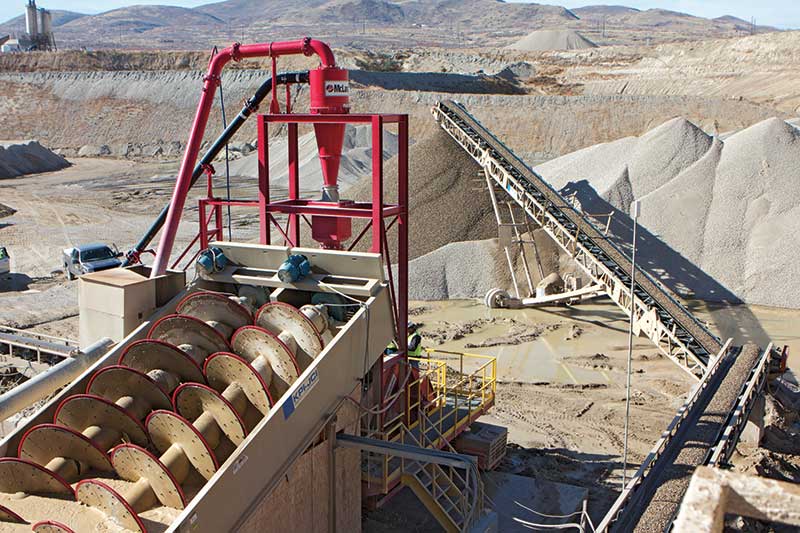Improving fines recovery with new equipment
Kilgore Companies, a subsidiary of Summit Materials, was formed in 2010 through the merger of Harper Contracting, Altaview Concrete, Kilgore Paving, EnerCrest Products and Triple C Concrete.
Combining these companies led to a significant presence for Kilgore in the western United States. At its site in Bluffdale, Utah, just south of Salt Lake City, Kilgore processes two types of concrete sand, as well as stone and gravel. In total, the company makes about 750,000 tons of aggregate each year selling it to users throughout the Salt Lake Valley.
Like so many other sand-and-gravel operations, Kilgore uses a wash plant to process the raw feed material and make a concrete sand product. However, it is losing a lot of potential product, including product-sized sand, through the overflow of an existing screw washer.
“We were losing a lot of our fines into our pond instead of being able to capture that and make it a sellable product,” says Mike Sosa, foreman at Kilgore.
The loss of this sand product meant the company was losing out on potential profits. To combat this issue, the decision was made to look for a solution that would allow Kilgore to do more with the material.
Solutions

Kilgore’s new system includes a McLanahan pump, a separator and a dewatering screen at the screw washer’s product discharge chute. Photos courtesy of McLanahan Corp.
To improve sand recovery, Kilgore reached out to McLanahan Corp., which tested samples at its in-house laboratory to determine how much product size sand was in the material. As a result, McLanahan engineered a system that fit Kilgore’s existing screw washer and sump without forcing the company to greatly increase its physical and environmental footprint.
The new system, which became operational in mid-2014, includes a McLanahan pump, a separator and a dewatering screen at the screw washer’s product discharge chute. McLanahan engineered the system to utilize the customer’s existing sump. Overflow from the screw is collected in the sump, from which the rubber-lined pump feeds the separator.
The separator then makes a cut at 200 mesh and discharges the recovered solids of +200 mesh back into the sand product on the dewatering screen, further dewatering the screw washer product and separator product and producing a drip-free sand.
McLanahan engineers also took into consideration Kilgore’s need to produce two different spec products. The result is a plant that can easily change spec sizes with the turn of a valve on the separator overflow pipe.
Results
Since the startup of this new fines recovery product scavenger system, Kilgore has seen a number of benefits and improvements to its operation.
The company has been able to increase the tonnage on the belt by more than 30 tons per hour, and it’s producing a drier product at 85 percent solids – about 10 percent less moisture in the product. Kilgore is also able to retrieve more salable material instead of sending it to ponds, helping to increase product yield and profitability.
“Kilgore wanted to be able to utilize the waste product for a salable material,” Sosa says. “Also, with us making our two different specs it helps to be able to control that bottom end a lot better.”
Increasing its product yield by 10 percent means less solids reporting to the pond. As a result, Kilgore employees now spend less time cleaning out their pond.
“At Kilgore, what we’ve done in the past is dug it out, usually with some sort of a long-reach track hoe,” Sosa says.
He says the new equipment means they don’t have to do it as often.
“Instead of having to clean out our ponds once a week, we’re now doing it once every two weeks.”
Kilgore also finds the system is easy to operate and maintain.
“The McLanahan system is quite simple maintenance wise,” Sosa says. “You have very few moving parts and the parts you do need to service regularly are easily accessible.”
Information for this article courtesy of McLanahan Corp.









